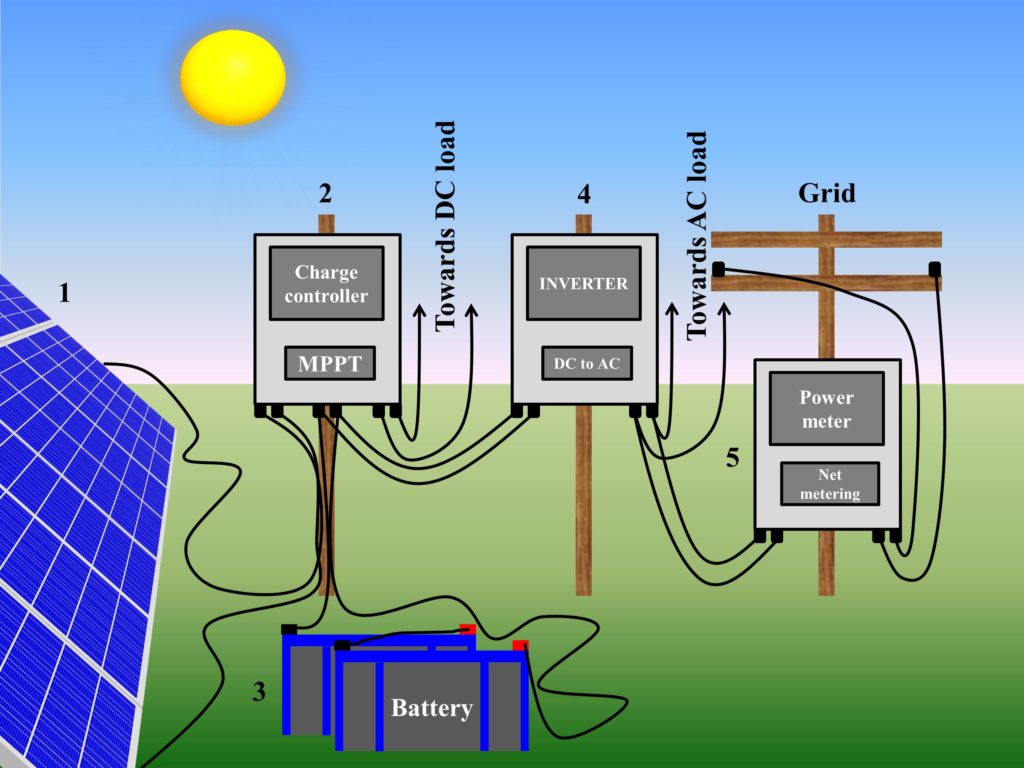Components of solar PV system
The major component of a solar PV system is the solar panel itself. After the solar panel, there are many components that are needed to provide power to appliances, store the additional energy, and provide power to the grid itself. The major components of a solar PV system are mentioned below.
solar panels (1)
The solar panels are the primary component of any photovoltaic system. Solar panels are primarily responsible for generating power through the photovoltaic effect. The advantage of solar panels is that they generate power without creating any side effects and the resource which they use (solar energy) is renewable. Therefore, energy generated from solar panels is termed renewable energy. Since the solar panels are the first step towards a photovoltaic system, it labeled as 1 in Fig. 1.

Charge controller (2)
The charge controller (shows in Fig. 1 by 2) is a device that draws maximum voltage from the solar panels. It uses a maximum power point tracking (MPPT) algorithm to track the maximum voltage that can be obtained from strings of solar panels and sets the operating point of the PV system at that voltage. Another important function of the charge controller is to regulate the charging of the batteries (battery bank) employed to store the electrical energy. It stops the batteries to be overcharged and therefore, preserves them. The DC power from the charge controller can also be used to power DC appliances.
Battery bank (3)
The batteries (given in Fig. 1 as 3) are used in photovoltaic system to store electrical energy. The batteries are employed where the electrical energy is required in the evening. Moreover, one battery is usually not enough to store the electrical energy that may be required by the consumer, therefore, usually a number of batteries are connected to store the required energy. Batteries are the most inefficient system in the PV system, and they also need to be replaced after every three to five years.
Inverter (4)
The inverter (depicted in Fig. 1 by 3) is a device used to convert DC output from the charge controller to AC. They are employed in the PV system to supply the power to AC appliances of the consumer and to supply the surplus electrical energy generated to the grid. The inverter is one of the major components of the solar PV systems and it is required by most PV installations. Modern inverters carry the functionality of charge controllers as well, where they implement the MPPT algorithm and regulate the charging of the battery bank.
Power meter (5)
A power meter (5 in Fig. 1) is a device that measures the electrical energy (in kWh) generated by the solar PV system and supplies this energy to the grid. It also implements the concept of net metering where the number of units of electricity consumed from the grid is deducted by the number of units produced by the PV system. This scheme reduces the total amount of electricity consumed by the user of the PV system and therefore reduces the electricity bill.
